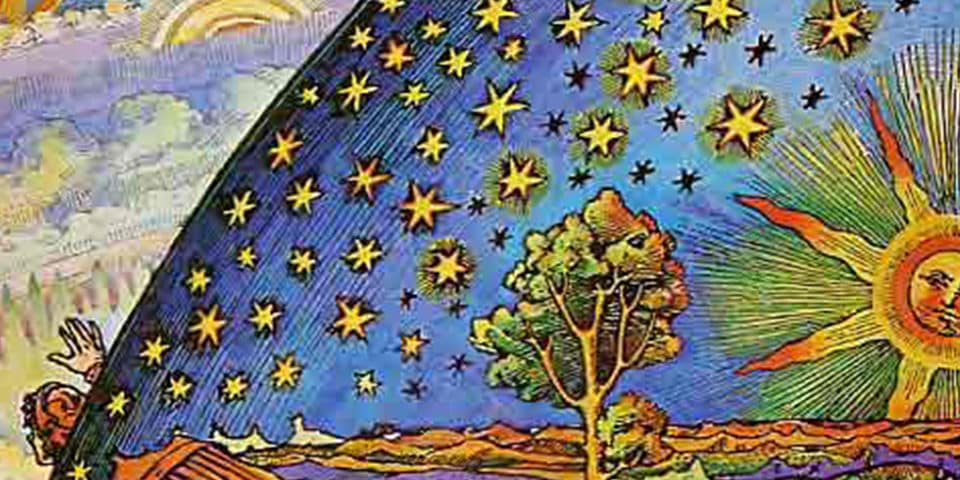
MOTIVATING GIVES ENERGY TO CHANGE
7 March 2019
Mood Vs Emotion: five factors that delineate the difference between mood and emotion
22 March 2019Article by Patrizia Sangalli – “Leadership and Archetypes” – MARCH 2019_ LEADERSHIP & MANAGEMENT
The topic of Leadership has been explored, explored, interpreted and sometimes even manipulated to such an extent that any attempt to get to the essence becomes complex. The questions, however, remain the same as ever: what is leadership? Is one born a leader or does one become one? Is leadership a talent? Personality? Competence?
For a long time, this concept was the preserve of specific cultures, particularly the organisational and social-political worlds. The research was focused, in these cases, on leadership as the primary necessity for the birth and growth of a group or community which, only if it can equip itself with the right resources and skills, can survive.
Although the need to affirm a leadership-guide and the cult of the great man has been present since ancient times, it has gradually become clearer that, in large societies, there is a need for guidance from strong, charismatic, ‘superior’ leaders. Never, however, have we felt the need for enlightened leaders so strongly as at this moment in history.
While the old conceptions of leadership exalted the role and the power attached to it, the perspective has changed in recent years. A current of thought has emerged in which the meaning of leadership no longer simply expresses role and acquired power, but takes on a broader meaning: of guidance, support and wisdom. The leader is he or she who first and foremost knows how to enthuse, involve and mobilise others and, therefore, knows how to harmonise everyone’s energies to bring about genuine teamwork. But above all, the leader expresses something that goes beyond action, he or she acts with personal mastery: he or she knows himself or herself and his or her strength.
It is precisely around the concept of personal mastery that the new idea of leadership has been reinforced. Beyond the commonly attributed meaning of hegemony over something or someone, mastery also means a special meaning of expertise and skill. Personal mastery therefore indicates a particular level of skill with respect to oneself. People who express personal mastery are keenly self-aware and have a deep connection with themselves.
There are now many who believe and maintain that the greatness of leadership lies in the ability to move deep aspects, to touch people’s emotional spheres: all this underlines the necessity and importance of self-knowledge and self-awareness as an essential prerequisite for being able to understand others. From this perspective, it is easier to understand some of the basic mechanisms on which leadership is based. The leader becomes a true role model, able to exert his or her influence on the moods and behaviour of those around him or her, since he or she is aware, i.e. master, of his or her own.
At a deeper level, great leaders have become symbols of the group soul. Although in different eras and worlds, they were able to inspire with their vision and touch the world of needs and desires of others as well, leading them to the fulfilment of their aspirations. They knew how to convey to others something that was in them, to create a kind of ‘resonance‘, a reservoir of positivity, releasing what is best in each individual. They were able to touch their souls. The question that naturally emerges is: how?
This is the new perspective, the new way in which leadership takes on a different meaning and purpose: not as a new pattern of behaviour, but as the effect of an integrated whole. Only through the harmonisation and integration of these parts can our leadership authentically express itself and flow. A path of leadership development is therefore a journey of expanding one’s awareness, which cannot be separated from the discovery of the deepest and most ancient drives and dynamics, in order to understand our vision, our true purpose. To achieve this, we believe that the first and most important step is to ask ourselves: what do I really want? Where do I want to go and why? What is the nature of my inner power?
This is a far from trivial exploration, allowing us to come to a better understanding of our purpose, our needs, and discover the root of our passion, connecting with the ‘hero’ within each of us. Carl Gustav Jung saw in this dynamic the world of the Personality Archetypes, noting that universal stories manifest both on a personal level and collectively within groups. Each Personality Archetype offers a unique set of abilities, strengths and characteristics. Alongside these there are also corresponding shadow traits; areas of personal weakness where we are inspired to evolve. By identifying with the Archetypes, we allow ourselves to assess our personality, discovering where our natural abilities shine and which habits tend instead to represent a limitation to our potential evolution. Archetypes are the underlying patterns of human nature and experience, often invisibly but powerfully running the show, they are embedded in our mindset and behaviour, as well as in our inner values and motivations. The better we understand these models, and the more consciously we use them, the more effective we will be in our role as leaders.
Amongst the many insights into archetypal models, one of the best known and most fitting is Carol Pearson’s model, which lends itself well to a parallelism with the different forms in which leadership is expressed: to each of the 12 archetypes corresponds a precise leadership style. The twelve archetypes are: Innocent, Orphan, Warrior, Guardian Angel, Seeker, Lover, Destroyer, Creator, Sovereign, Wizard, Wise Man and Madman. They represent guides that reside within each of us, everywhere, in all peoples and all over the world. Each of us experiences them all, but each of us experiences some of them above all, according to our own way of being and seeing the world, without forgetting that each archetype that actively enters our lives, whether it remains there for a short or long time, carries with it a message, a task, a gift for our growth.
Discovering and awakening the Leader (the hero) within us is tantamount to saying yes to ourselves and becoming more fully alive and more effective in the world. Exploring the dynamics of archetypes with respect to one’s leadership style is an inspiring journey for both young people taking their first steps and veterans looking for new ways to communicate and lead people. Our time, well summarised by the acronym VUCA (Volatile; Uncertain; Complex; Ambiguous), leads us to experience even paradoxical situations, never experienced before and often our actions appear empty and meaningless. To overcome this, it is important to feel rooted, to understand where our roots lie, even far away, beyond time and history.
Going in search of one’s own journey, as a hero-leader, is of essential importance. It means being sincere, finding harmony with oneself, living our life and our role responsibly. Learning to recognise how the archetypes move, integrate or conflict within us, allows us to better lead, more consciously and effectively, the dance of our success.
Bibliography:
- Pearson, C. S. (1992). Rawakening the hero within us: twelve archetypes for finding ourselves. Astrolabe
- Jung, C. G. (1980). The archetypes of the collective unconscious (1934-54). Bollati Boringhieri.
- Senge, P. M., & Gardini, C. (1992). The fifth discipline (Vol. 30). Sperling & Kupfer.
.
.
.
.



